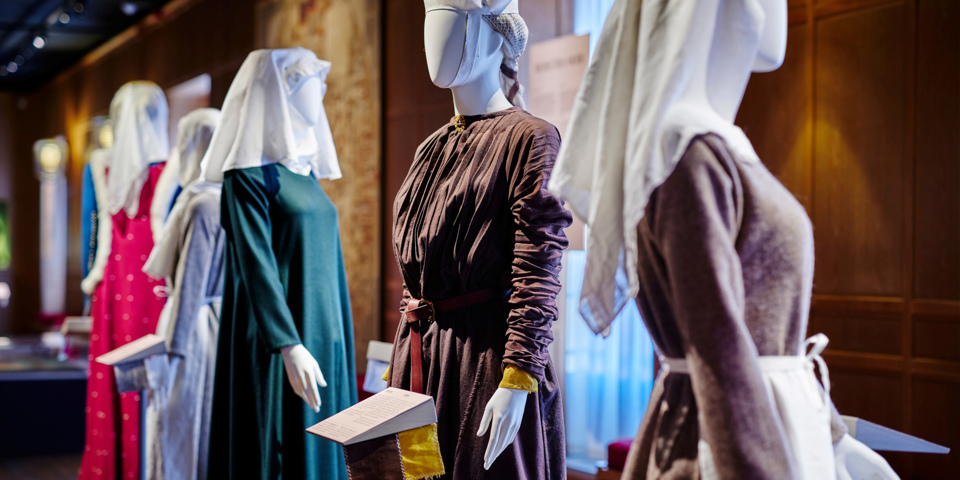During the Middle Ages, all clothing was a precious commodity. There were no mass-produced clothes in cheap materials. All clothing was hand-sewn and measured for the person who would first wear the garment. Clothes were often used until they were completely worn out, and then the textiles could be used for patching and mending.
In the exhibition “Medieval Fashion,” newly sewn women’s garments from the 11th century to the early 16th century are displayed, including both simpler and more elaborate outfits. The Medieval Museum’s seamstress, Åsa Dahlstedt, in collaboration with the Swedish duo Historical Textiles, has spent four years developing patterns, dyeing fabrics, and fully recreating 14 costumes.

